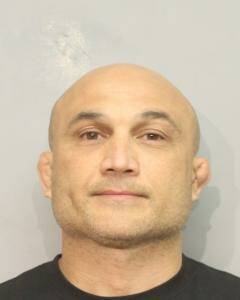Paris is Utopia for paralympians until they leave the athletes’ village
PARIS — To many of the athletes arriving at the 2024 Paralympic Games in Paris, the part of the city designed specifically for them amounted to something of a utopia.
The Paralympic Village had plenty of adaptive scooters that, when latched onto the front of a wheelchair, help it easily navigate the athletes’ mini-city, which is situated in the hilly exurbs of northern Paris. Tri-level water fountains had spouts at standing height, wheelchair level and ground level — for guide dogs. Every shower in the athlete housing complex could be rolled into. Even the T-shirt racks in the official merchandise store could be reached from a seated position.
ADVERTISING
“It’s the place in the world where I feel the least disabled,” said Birgit Skarstein, a Norwegian para rower. She added: “I don’t have to go on Google Maps and zoom to see if there are stairs wherever I’m going, you know, to plan. I don’t need to figure out whether I can go to the toilet, because I know. And if the world could be like a Paralympic Village, it would be better for all of us.”
But never mind the world — even the rest of Paris is not like its Paralympic Village. Although the city made extensive improvements in the years leading up to the Games, it will be decades before its cobbled streets, narrow sidewalks and small parks achieve even a semblance of the Village’s accessibility.
Paris’ 124-year-old Metro system poses the largest challenge. Despite the considerable investment in infrastructure made since 2017, when the city won its Olympic bid, only 25% of the rail network that travels to central Paris — including the Metro, express rail and trams — is accessible to people with disabilities. And only one Metro line, its newest, is fully accessible to those who use wheelchairs.
“Just to make sure we become full-rights citizens — that’s the whole challenge and the whole idea of the Games,” said Michaël Jérémiasz, a former wheelchair tennis player and member of the Athletes Council who advised the Games’ organizers. “So we’ll measure all this in probably five, six, seven years. That’s where we can really measure the impact of the Games. Before that, that’s not something we’ll feel probably in real life.”
‘The Metro is a disgrace’
Before the Paralympic opening ceremony Wednesday, some of Paris’ efforts to improve accessibility were evident. Tactile strips, which aid visually impaired people, blended into the surroundings at some crosswalks near the Arc de Triomphe. Beige boxes attached to sturdy lampposts each housed a button that, when pressed, sounded a series of bells to let visually impaired pedestrians know it was safe to cross the street.
The improvements were made possible by an investment of nearly $140 million as part of an effort to make the Games accessible to everyone. Lamia El Aaraje, the city’s deputy mayor in charge of universal accessibility, said in an interview that 91% of municipal buildings would be fully accessible by 2025, up from 40% in 2022. She added that nearly $25 million had been spent to bring the city’s bus network to full accessibility by redesigning bus stops and training staff to accommodate disabled passengers.
Along with tactile strips and audible signals at 225 crosswalks, the city also added parking in 17 “accessibility enhanced” districts, with the goal of meeting its pledge to be “universally accessible” before the Olympics opening ceremony in July. The area also has 1,000 additional accessible taxis that El Aaraje said would remain after the Games.
While she acknowledged that having the Olympics as a deadline had been a useful cudgel to expedite development, El Aaraje said it went only so far in motivating the many stakeholders across a number of local and national entities.
“The Paris Metro within the city walls, the historic Metro, is not accessible,” she said. “And it’s true that it’s a pity we didn’t seize the opportunity of the Games to try and accelerate this issue.”
On Monday, Valérie Pécresse, the head of the public transport authority Île-de-France Mobilités and president of the Île-de-France regional council, proposed a plan for making all of the railway’s older lines fully accessible at a cost of 15 billion to 20 billion euros. Pécresse said the agency was ready to assume one-third of the cost and called on the state and the city of Paris to cover the rest.
“We need to sit down and agree on the principle that the main transport issue for the next few years is not the creation of new lines, but the accessibility of the historic network. It’s a political decision that all three of us need to make,” Pécresse said.
But El Aaraje called financing one-third of the proposal “far-fetched” and said the city had “done our part” in redesigning roads to allow for accessible transport.
“We have been pushing the argument in favor of making the Metro partially accessible,” she said via text.
France passed its first law requiring accessibility in public spaces in 1975, with no deadline for compliance. In 2005, the Law for Equal Rights and Opportunities for People With Disabilities set an initial target date of 2015, but provided no penalty to ensure enforcement. A 2014 act extended the deadline to Sept. 26.
“This deadline, in an extraordinary coincidence, coincides to within a fortnight of the end of the Paralympic Games date,” said Nicolas Mérille, accessibility adviser to APF France Handicap, an advocacy group. By that time, all establishments open to the public, from kindergartens to tobacco shops, should be accessible.
“And public transport must be accessible,” Mérille said. “And we can already see that there will be a huge backlog.”
Still, in 2021 the United Nations Committee on the Rights of Persons With Disabilities criticized France for “systemic discrimination against persons with disabilities.” The European Council for Human Rights condemned the country in 2023 for failing to increase access to education, health care, buildings and transportation. (Days later, President Emmanuel Macron announced that France would allocate 1.5 billion euros — roughly $1.67 billion — to making public spaces accessible.)
Though the Olympic and Paralympic Games have touted accessibility efforts on behalf of athletes and spectators, some with disabilities pointed out the difficulty of daily life in Paris. Amaury Bost, who uses a wheelchair, participated in the “Marathon for All” held during the Olympics. He and the team of friends who pushed his all-terrain chair were featured in a video montage shown at the closing ceremony of those Games.
But Bost, a Paris resident who has used a wheelchair since 2011, is often challenged by the cobblestone, narrow or oddly inclined sidewalks near his home, according to his brother Benoît, his caregiver.
“So if you’re in a wheelchair, you’re dead,” Benoît Bost said. “That’s why you end up with electric wheelchairs on the road and not on the sidewalk.”
Accessibility at the Games
Spectators at the Games, which end Sept. 8, may briefly encounter the inclusive environment that wowed Skarstein, the Norwegian rower, and other athletes at the Paralympic Village.
“Each of the competition sites has been modified to ensure there will be fluid movement, whether it’s for an athlete, spectator or staff,” Ludivine Munos, the Games’ director of integration, said in a news conference Monday. Buses will ferry passengers from 10 of the largest Metro stations to the 13 Paralympics venues, which have dedicated drop-off zones.
Visually impaired fans at the Stade de France can request headsets that will show an enhanced version of the action displayed on the video boards around the venue. The headsets will also offer audio commentary. At rugby, blind football and goalball events, some fans will be able to follow the matches on touch tablets whose 3D pieces slide around to indicate player movement.
Porte de la Chapelle Arena, the only venue built specifically for the Olympic and Paralympic Games, was built to be fully accessible. It is hosting badminton events during the Paralympics and will host concerts and games for Paris’ professional basketball team in the future.
For those seeking greater accessibility, it’s a start.
“It cannot be solved with a magic wand: Harry Potter doesn’t exist, unfortunately,” said Alexis Hanquinquant, a para triathlete competing for France. “But what we need to do is build on the legacy of the Paris Games so that every building, every renovation, every new construction can be 100% accessible.”
This article originally appeared in The New York Times.
© 2024 The New York Times Company





